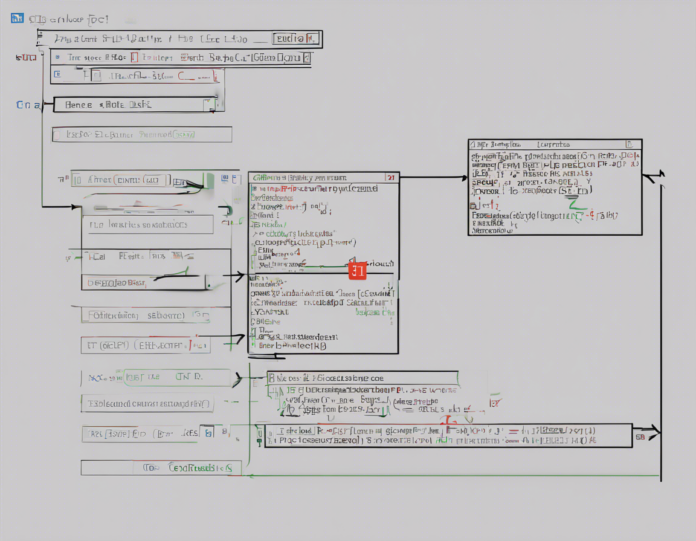When it comes to programming in C++, there are many common tasks that developers encounter. One of these tasks is reversing a string, which involves flipping the characters in a string so that they appear in the reverse order. This is a fundamental operation that can be useful in various scenarios, such as when working with text processing or algorithm development.
In this comprehensive guide, we will dive into different approaches for reversing a string in C++, explore the underlying concepts, and provide examples to illustrate each method. Whether you are a beginner looking to understand the basics or an experienced programmer seeking a refresher, this article aims to equip you with the knowledge needed to effectively reverse strings in C++.
Understanding Strings in C++
Before we delve into reversing strings, it is essential to understand how strings are represented and manipulated in C++. In C++, a string is typically represented as an array of characters ending with a null character \0. This null character signifies the end of the string and is important for string processing functions to determine the string's length.
cpp
char str[] = "Hello, World!";
In the example above, the variable str contains the string "Hello, World!" along with a null character \0 at the end.
Method 1: Using Iterative Approach
One common approach to reverse a string is to use an iterative method. This method involves traversing the string from both ends and swapping the characters until the entire string is reversed.
```cpp
include
include
void reverseStringIterative(char str[]) {
int len = strlen(str);
for (int i = 0; i < len / 2; i++) {
std::swap(str[i], str[len - i - 1]);
}
}
int main() {
char str[] = "Reverse Me!";
reverseStringIterative(str);
std::cout << "Reversed String: " << str << std::endl;
return 0;
}
```
In the code snippet above, the reverseStringIterative function takes a character array str as input and iterates over half of the string's length, swapping characters from the beginning and end of the string.
Method 2: Using Recursion
Another approach to reversing a string is through recursion, where a function calls itself to reverse a part of the string and gradually builds up the reversed string.
```cpp
include
include
void reverseStringRecursive(char str[], int start, int end) {
if (start >= end) {
return;
}
std::swap(str[start], str[end]);
reverseStringRecursive(str, start + 1, end - 1);
}
int main() {
char str[] = "Recursion";
int len = strlen(str);
reverseStringRecursive(str, 0, len - 1);
std::cout << "Reversed String: " << str << std::endl;
return 0;
}
```
In this code snippet, the reverseStringRecursive function reverses a part of the string between the start and end indices by swapping the characters and recursively calling itself with updated indices.
Method 3: Using Standard Library Functions
C++ provides standard library functions that can simplify the process of reversing a string. By utilizing functions like std::reverse from the <algorithm> header, developers can achieve string reversal with minimal code.
```cpp
include
include
include
int main() {
std::string str = "Standard Library";
std::reverse(str.begin(), str.end());
std::cout << "Reversed String: " << str << std::endl;
return 0;
}
```
In the above example, the std::reverse function from the <algorithm> header is used to reverse the characters in the std::string variable str.
Comparing Performance
When considering different methods for reversing a string, it is important to evaluate their performance characteristics. Iterative and recursive methods have a time complexity of O(n) where n is the length of the string, while using standard library functions may offer a more concise and potentially optimized approach.
Benefits and Drawbacks
- Iterative Approach: Simple and efficient for reversing strings in-place but requires manual character swapping.
- Recursive Approach: Elegant solution leveraging function calls but may encounter stack overflow for very large strings.
- Standard Library Functions: Concise and readable code using built-in capabilities but may involve additional overhead.
Conclusion
Reversing a string is a common programming task that can be approached using various methods in C++. Whether you opt for an iterative, recursive, or standard library-based solution, understanding the underlying principles is crucial for efficient string manipulation. By exploring different approaches and their performance considerations, developers can choose the most suitable method based on their specific requirements.
FAQs (Frequently Asked Questions)
Q1: Can I reverse a string without using additional memory in C++?
A1: Yes, you can reverse a string in-place without using extra memory by swapping characters within the same string.
Q2: Which method is more efficient for reversing large strings: iterative or recursive?
A2: For larger strings, an iterative approach is generally more efficient due to its lower stack usage compared to recursive calls.
Q3: Are there built-in functions in C++ to reverse a string easily?
A3: Yes, C++ provides standard library functions like std::reverse for reversing containers such as strings.
Q4: How can I reverse a string word by word in C++?
A4: To reverse a string word by word, you can tokenize the string based on spaces and then reverse the order of the resulting tokens.
Q5: Is it possible to reverse a string using pointers in C++?
A5: Yes, you can reverse a string using pointers by manipulating memory addresses to swap characters effectively.
These FAQs cover common queries related to reversing strings in C++, providing insights into different aspects of string manipulation and reversal.

